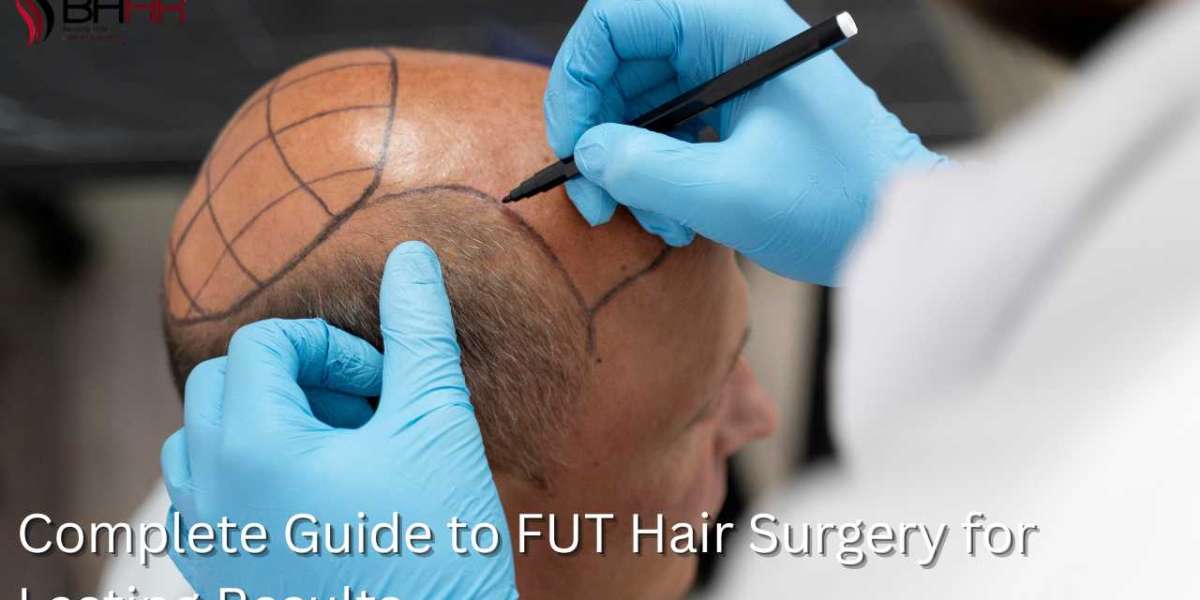Hair loss impacts millions of people worldwide, often impacting confidence and quality of life. Among the most effective solutions available, FUT hair surgery stands out as a time-tested technique for restoring natural hair growth. This complete manual will walk you through everything you need to know—from how the procedure works to who it’s best suited for, what to expect during recovery, and the lasting results you can anticipate.
What Is FUT Hair Surgery?
FUT, fast for Follicular Unit Transplantation, is a surgical hair restoration technique often recommended for people dealing with noticeable hair thinning or bald spots. The procedure involves carefully removing a narrow strip of skin from the back of the head, where hair growth is typically dense. This strip is then divided into tiny, natural hair groupings called follicular units. These units are individually transplanted into areas where hair is sparse or missing. Unlike temporary solutions like creams or non-surgical treatments, FUT offers a long-lasting solution by relocating healthy hair follicles to the areas that need them most.
How the Procedure Works
The journey begins with a consultation where the surgeon takes a close look at your hair loss and checks the health of the donor area—usually the back or sides of your head. This helps them understand your needs and plan the best approach. When it’s time for the procedure, here’s what usually happens next:
- Donor Area Preparation: A strip of scalp is surgically removed from the donor site.
- Graft Dissection: The strip is carefully dissected under a microscope to create grafts containing 1 to 4 hairs.
- Small openings are carefully created in the thinning or balding areas to prepare for graft placement.
- Graft Placement: The follicular units are strategically implanted for natural-looking density and pattern.
- Closure: The donor area is sutured and typically leaves a fine linear scar that can be hidden under hair.
The whole process can take anywhere from 4 to 8 hours, relying on the number of grafts being transplanted.
Who Is an Ideal Candidate?
Not everyone experiencing hair loss is suitable for this method. FUT is generally best for individuals who:
- Have advanced hair loss or baldness.
- Possesses good hair density in the donor area.
- Are seeking maximum graft yield in one session.
- Do not mind a linear scar on the donor site.
- Prefer a more inexpensive option compared to other hair transplant techniques.
Age and general health are also considered, as underlying medical conditions can impact healing and outcomes.
Benefits of FUT Hair Surgery
This procedure offers several notable advantages:
- High Graft Yield: It allows a large number of grafts to be transplanted in a single session.
- Natural Appearance: When completed by a skilled surgeon, the results mimic natural hair growth.
- Permanent Results: The transplanted hair is typically resistant to balding.
- Cost-Effective: It’s often more affordable than alternative hair restoration methods due to fewer sessions.
Potential Risks and Side Effects
As with any surgical operation, there are risks involved. Common side effects include:
- Redness or swelling at the surgical site.
- Temporary numbness in the donor area.
- Linear scarring at the back of the head.
- Minor discomfort during recovery.
Serious complications are rare but can include infection or poor healing, especially if aftercare instructions aren’t followed.
Recovery and Aftercare
Recovery from FUT is relatively quick. Most patients return to work within a week. However, it’s essential to:
- Avoid strenuous exercises for at least 10 days.
- Sleep with the head elevated for the first few nights.
- Follow the clinic’s instructions for washing and caring for the scalp.
Shedding of the newly transplanted hair is normal within the first 2–4 weeks. New growth typically begins around the 3-month mark, with full results visible after 9–12 months.
Cost Considerations
The price of the course varies depending on the clinic, the surgeon’s experience, and the number of grafts required. On average, prices can vary from $4,000 to $15,000. While this may seem high, it’s a one-time investment for long-term results. Most clinics offer financing options for eligible patients.
Choosing the Right Surgeon
The outcome of your FUT hair surgery depends heavily on the surgeon’s skill. When researching potential providers, consider:
- Board certification and years of experience.
- Before-and-after photos of previous patients.
- Reviews and testimonials.
- Availability of a personalised consultation.
Never choose a clinic solely based on low cost, as subpar procedures may lead to unsatisfactory results or complications.
Comparing FUT with Other Techniques
FUT and FUE (Follicular Unit Extraction) are the two most popular surgical options. While FUT is more suitable for those needing a large number of grafts, FUE may be better for patients who prefer minimal scarring or want to wear shorter hairstyles. Consulting with a skilled surgeon will help select the best choice for your needs.
Conclusion
FUT hair surgery is still one of the most trusted and effective ways to treat major hair loss. When done by a skilled professional, it can give you permanent, natural-looking results. Knowing what to expect—from how the procedure works to the recovery process and long-term outcome—can help you feel more confident and prepared. Whether you're just beginning to explore your options or already planning for surgery, taking the time to understand everything involved can make a big difference in how satisfied you are with the results.








